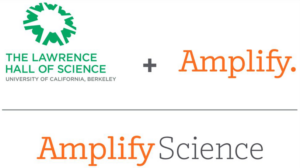Adopted Elementary and Middle School Science Curriculum
Amplify Science in Elementary and Middle School
The adopted Seattle Public Schools elementary and middle school science curriculum is Amplify Science.
Amplify Science Instructional Model
Amplify Science’s instructional model allows students to access their prior knowledge and to connect past learning experiences to the present.
Students have the opportunity to ask questions and define problems about the natural and designed world, design investigations in which they collect and analyze trends and patterns in their data, engage in argument form evidence in both writing and through discourse with their peers, develop conceptual scientific models of physical phenomena, and to communicate their findings from their investigations.
Each unit is constructed as a compelling storyline which begins by engaging learners in a puzzling, relevant scientific phenomenon or engineering problem. Throughout the unit, students develop the scientific understanding needed to explain the phenomenon or design a solution through the collection of evidence, and in this way they are engaged and challenged to “figure out,” not simply “learn about,” important science concepts. Amplify provides both online and offline instructional platforms with embedded flexibility for educators to adapt learning activities and differentiate instruction to accommodate students with diverse learning needs including students with IEPs, highly capable students, and English language learners.
To learn more about specific units in Amplify Science for elementary and middle school science, click the buttons below.
Assessment
The Amplify Science curriculum was constructed to develop deep science knowledge and understanding, not merely touching on each science standard, but allowing for a depth of coverage in a variety of learning style for each. The program’s system of assessments provides an innovative means of supporting all students in developing this deep understanding. By aligning instruction to focused, meaningful, and standards-based learning goals every student is achieving the level of understanding required by each unit.
Assessment opportunities include:
Explore More About Amplify Science
Amplify Science is the product of a collaboration between the University of California, Berkeley’s Lawrence Hall of Science and the instructional technologists at Amplify, with funding from the Bill & Melinda Gates Foundation, the Carnegie Corporation of New York, the Institute of Education Sciences, and the National Science Foundation.
Since their release in 2013, the Next Generation Science Standards (NGSS) have raised the bar for science education. Moving the focus of instruction away from memorization and toward active engagement and critical thinking, the standards aim to teach students to think like scientists and engineers and grapple with core scientific principles, in addition to supporting deep learning of concepts that cut across science domains. Amplify Science has been designed from the ground up to meet the Next Generation Science Standards and respond to the instructional shifts called for by the National Research Council’s Framework for K-12 science education (2012).


